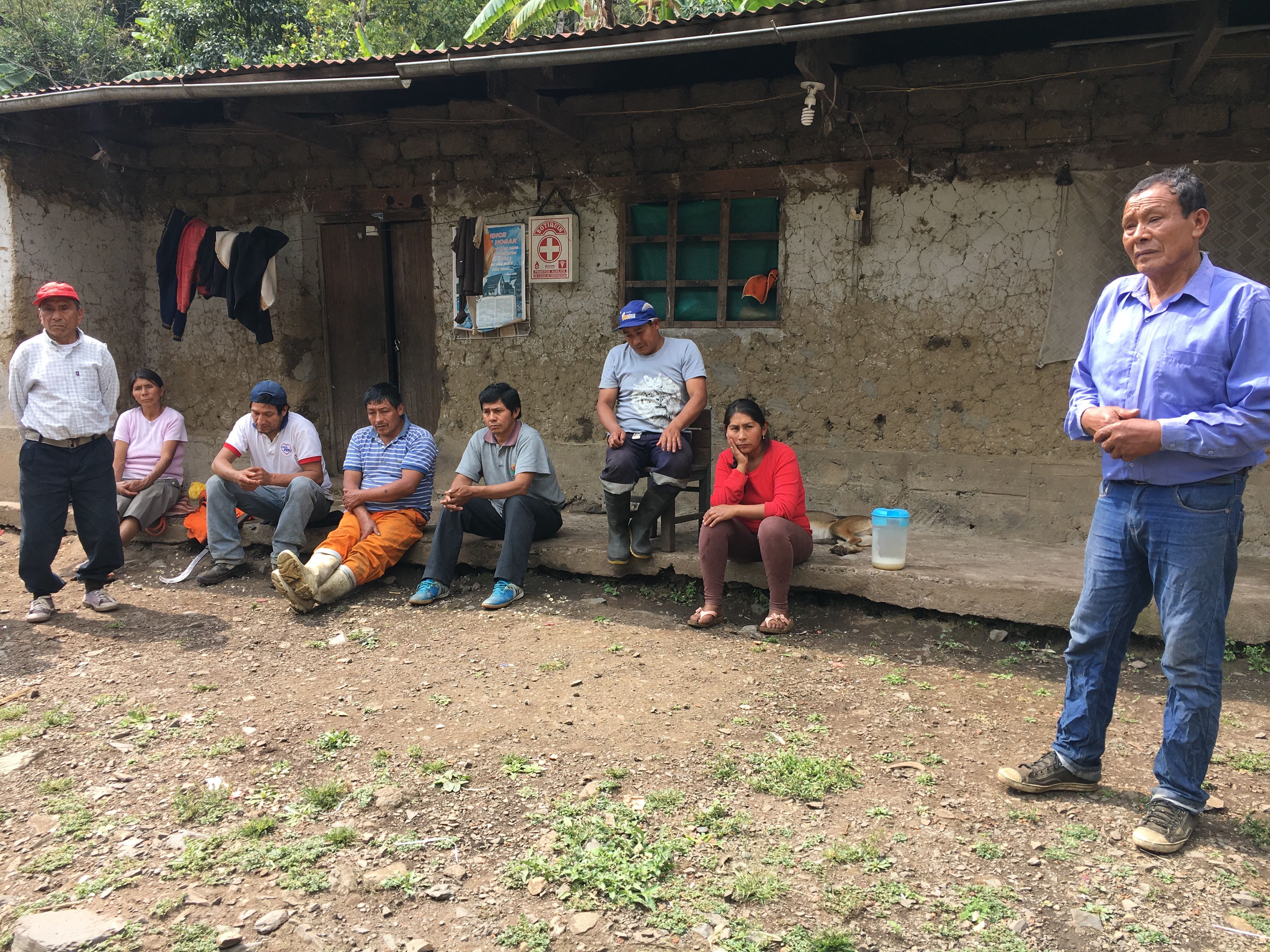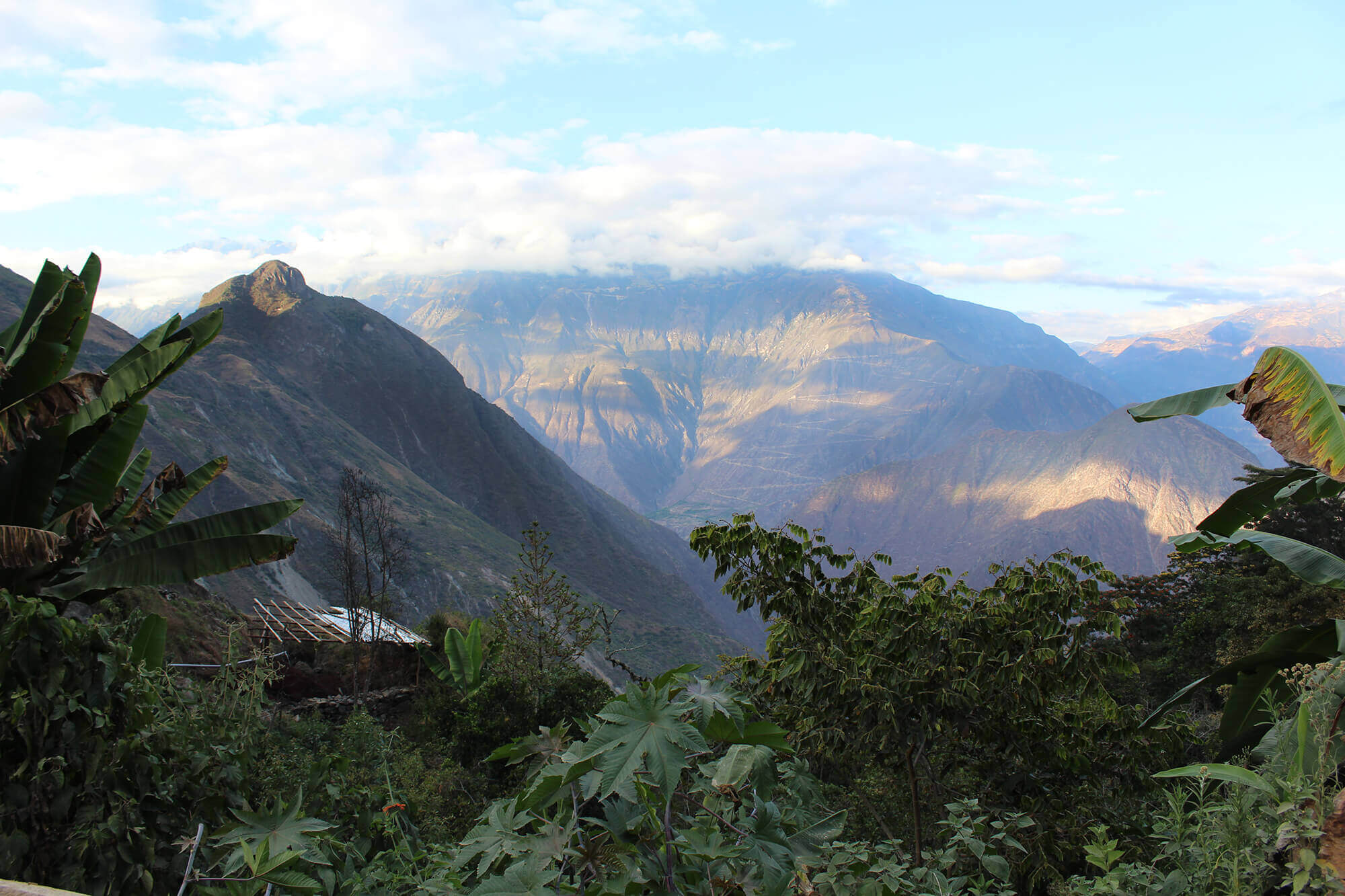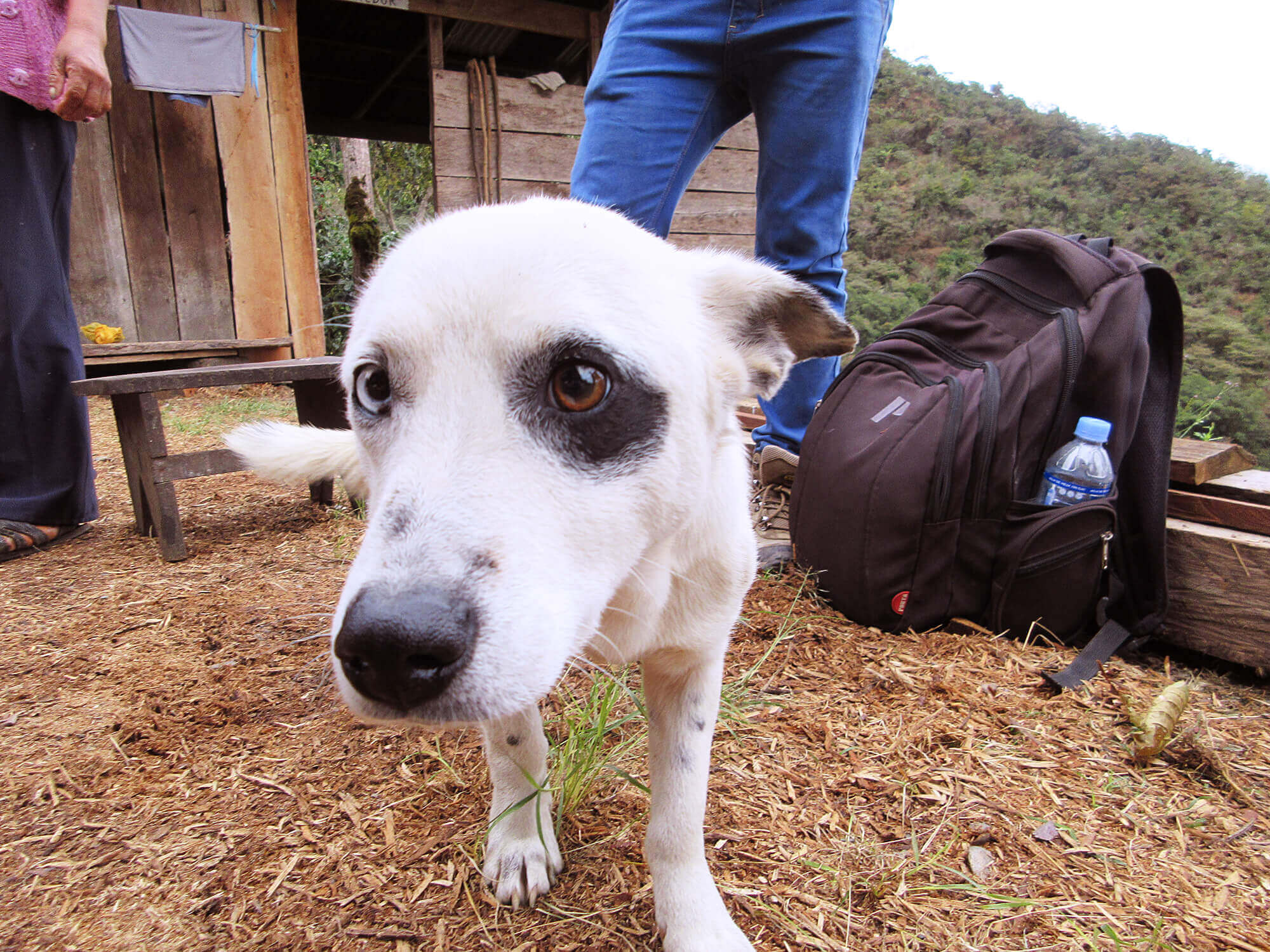In our previous series, Paying for Coffee: It’s Complicated, we talked about the various factors that underpin how we as a sourcing company buy coffee, as well as how to discuss it. While that series looked at the larger picture and laid crucial groundwork for the discussion, this is something we feel we—and the industry at large—need to go deeper on. This series will take a closer look at the details that underpin how we buy coffee in our major supply chains, each of which is unique.

Valle Inca and Red Fox
Valle Inca is a perfect expression of the work around which Red Fox was built. Located in Calca (specifically the remote subregions Yanatile and Lares) in the south of Peru, they launched in 2014 and we’ve been buying coffee from them ever since. Where, at first, Valle Inca yielded small quantities that struggled to make the grade quality-wise, they’re now one of our biggest vendors in all of Peru, producing enviable quality.
Leader Prudencio (Jose Prudencio Saenz Vargas) is a Calca native who brings former experience as a bank loan officer to his work running Valle Inca—fiscal experience of critical importance to Valle Inca and the surrounding community, most of whom are smallholders averaging just 2-3 hectares each. When he got started he was new to coffee production, but his extreme quality focus has always been key to the group’s success.
He helped Valle Inca producers move from drying coffee on plastic mats to raised beds, worked with our Head of QC in Peru, Tibed Yujra, to improve drying, fermentation, and storage practices, and was the first producing partner of ours to implement GrainPro in storing parchment. He meets farmers where they are in the isolated reaches of Yanatile and Lares and works with them to produce the best coffee they possibly can.
Prudencio has a real, genuine desire to help farmers get better prices for their coffee, which is often all too rare in producer leadership. All of this makes Valle Inca a perfect vantage point to look at not just what we pay for coffee, but how we buy it.

What We Pay
Just as in Inzá, we visit Valle Inca at the beginning of the production season to set prices for the year so that producers can know what to expect and budget accordingly, as can we. We have exclusive access to all of Valle Inca’s specialty weight, so it’s important to us to make sure that 1) the prices we pay incentivize Valle Inca selling to us exclusively and that 2) the prices we pay allow them to invest in producing top-quality coffee.
As in all of the origins we work in, we never tether any of our prices to the C market. As part of our strategy for making sure we have access to the highest quality coffee—and that the producers we work with have the resources they need to produce that quality—we set our base prices high, not just well above the C market but higher than prices that Valle Inca members could receive anywhere else.
With Valle Inca, we pay Prudencio a preset FOB price (or free on board, the price of the coffee at export) per green pound, and he pays the individual producers per quintal of parchment (100 lbs or 46 kg). Below is the breakdown of FOB prices we’re paying to Prudencio this year, and how they convert into farmgate prices that Valle Inca producers receive from him in turn. For reference, the highest-paying client in the local market outside of Red Fox pays 300 to 330 soles per quintal of parchment and $1.20 per quintal of green coffee. Other buyers pay between 280 and 320 soles. Valle Inca pays producers between 310 and 340 soles per quintal of parchment for the coffee that they purchase but don’t sell to Red Fox.

The exact soles quantity Prudencio pays to the farmers (expressed above as a range above) varies based on a few factors, including:
- The percentage of the parchment that converts to exportable green coffee after dry milling.
- Whether or not Valle Inca provided tools in advance of the season free of charge, like screens and mesh drying beds.
- How much payment the farmer need upfront (with financing costs so high, those who can wait longer to receive payment receive a small incentive).
Ex-Warehouse Pricing
As discussed in Paying for Coffee—It’s Complicated and Paying for Coffee: Inzá, the exporting, importing, and warehousing processes add substantial costs over and above the FOB prices, which is why we sell our coffee at an ex-warehouse price, or EXW. Once we factor in the cost of bringing coffee into port, getting it into a warehouse, holding it in the warehouse until it’s sold, and covering the additional operating costs of our business, we get to our ex-warehouse prices, the point at which roasters purchase our coffees.
Pricing Risk
When we sell coffee ex-warehouse, another factor we have to account for is the risk we take when carrying a large spot position from producer groups like Valle Inca. In Calca, Prudencio commits to paying for farmers’s coffee, and if that coffee falls below the predefined quality standards, he still pays those farmers the agreed upon amount. A similar dynamic holds true for us. Where many other importers and sourcing companies only buy what they can sell in advance, reducing their warehousing costs, we commit to anything Valle Inca produces within the quality limits we set, warehousing and selling it over a longer period of time.
What this often means is that we’re managing some amount of inventory in third-party warehouses for a longer period in order to fulfill our commitments—a cost we have to account for. We’re also accountable for any quality risks involved in this process, paying what we’ve committed to paying even if the coffee doesn’t arrive at the contracted quality level.

How We Buy
Those are the numbers that underpin the work we do with Valle Inca, from Calca to the US, but they still only capture a small part of the picture. Here, we’ll talk about what the actual buying, exporting, and importing process looks like.
While the farmers are drying their coffee on their farms, Valle Inca sends their agronomist out to farms to test moisture on the coffees before they make their way to the warehouse, allowing producers to further dry their coffee without having to cart it back and forth to the warehouse for testing (due to the challenging terrain in this region, this is a huge endeavor on Valle Inca’s part to save the farmers this journey).
Then, Valle Inca collects the coffee from 80% of members’ farms (the most distant ones); the other 20% take their coffee to one of two closer collection points, where Valle Inca picks it up. The coffee moves from there to the group’s warehouse in Calca. Prudencio used to run the whole organization out of his house, but now they have a physical warehouse and cupping lab where he does a preliminary filtering of the coffee, removing lots that are visibly unclean from the mix. Everything clean, he sends to our lab in Lima.
In Lima, we take the moisture and water activity of the coffees, then cup them via signal detection, scoring them numerically in a way that allows us to approve or reject coffees, then allocate them to specific tiers, from the regional ID to the community or producer ID, which determine the FOB prices we pay to Prudencio. We communicate this info to Prudencio and he passes it on to the farmers.
From there, we compose bespoke lots based on how to best represent each producer’s work, no matter what tier they are approved for, and organize them into specific container loads headed toward a specific warehouse location based on logistics and forward commitments from customers. Once the coffee ships, Prudencio gets paid.
Financing
As mentioned earlier, a hurdle that Valle Inca deals with is financing. Where larger and more established coops have access to loans from big banks in Peru, there are other social lenders like Root Capital that can give producers an advance. But, since Valle Inca was only established a couple years ago and is still small, they don’t have that access.
So, Prudencio actually takes out personal loans in his name to make sure everyone gets paid in a timely fashion and can buy what they need to produce coffee (as well as covering their other needs). Once the coffee starts shipping and he gets paid, he uses the money to buy more coffee from the farmers over the course of the season. Then, once everything has shipped, he pays all the farmers out 100%.

Coffees We Don’t Buy
Since Valle Inca is intensely quality-focused, Prudencio works only with farmers above 1500 masl and those who are willing to make quality investments where they can, and in this way he works to make sure everyone in his organization is aligned priority-wise. When the coffees don’t meet our predefined purchasing standards, he sells them to the local market, which, while nowhere near our price, is still higher than the C market price. He still pays producers the price he sets for them at the beginning of the season, and in these situations, he loses money. But, the far-higher prices he gets from the coffees that meet our standards help to significantly raise the net average price over what Valle Inca would receive elsewhere.
This is an issue we’re investigating further, through impact reporting that is happening right now.
Impact Reporting
Since Valle Inca is intensely quality-focused, Prudencio works only with farmers above 1500 masl and those who are willing to make quality investments where they can, and in this way he works to make sure everyone in his organization is aligned priority-wise. When the coffees don’t meet our predefined purchasing standards, he sells them to the local market, which, while nowhere near our price, is still higher than the C market price. He still pays producers the price he sets for them at the beginning of the season, and in these situations, he loses money. But, the far-higher prices he gets from the coffees that meet our standards help to significantly raise the net average price over what Valle Inca would receive elsewhere.
This is an issue we’re investigating further, through impact reporting that is happening right now.
Logistics and Shipping
As we’ve said, Calca, and the subregions of Yanatile and Lares, are incredibly remote and present complex logistics for transportation and exporting. These coffees are dry milled in Lima, about an hour drive from port but about a 20 hour drive from Calca. Aside from that complexity, Lima’s damp climate presents far-from-ideal conditions to store coffee, we store the coffee in Calca’s ideal conditions until we’re ready to ship, with a rule that coffees have no more than 10 days from getting into Lima to get milled and shipped.
Paying for Coffee—It’s Complicated
Despite being just a couple years old, Valle Inca is one of our core relationships. It’s one that perfectly expresses how we buy coffee, including, but not limited to, price alone. Their integrity, tenacity, quality focus, and drive to grow and improve are a perfect fit with our work, and we’re excited to offer an open window into this relationship for people ready to learn more about coffee sourcing, coffee pricing, and the logistics of how coffee gets from point A to point B.
As we move through the year, we’ll continue to shine a light on our individual supply chains, going deeper in order to show what our sourcing really looks like, from the ground up. It’s critical to the future of coffee that we as an industry have conversations like this: conversations where we discuss not just what we as companies pay for coffee, but how we buy it.
Interested in sourcing coffee with us? Reach out at info@redfoxcoffeemerchants.comcoffeemerchants.com!
